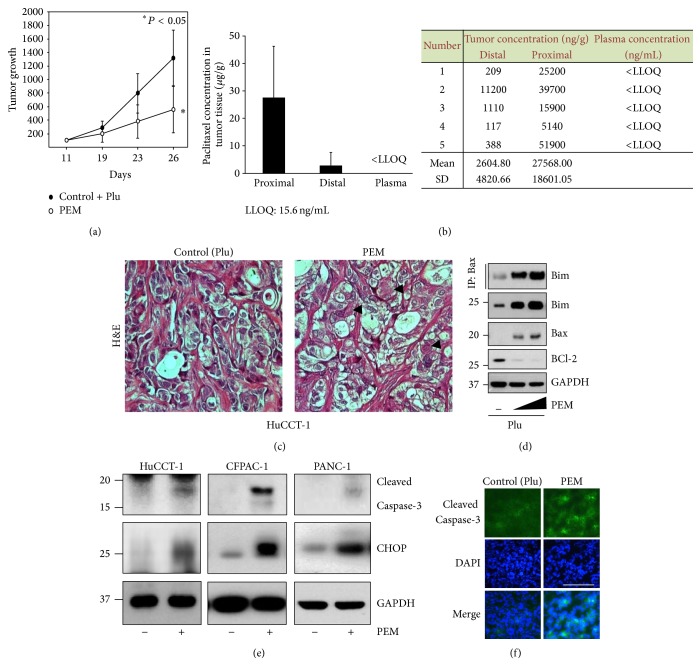Figure 1.
The paclitaxel-eluting membrane (PEM) reduces tumor growth by inducing apoptosis and endoplasmic reticulum- (ER-) stress in xenografted tumors. (a) The PEM (PTX 10% + Plu) was implanted once the SCK tumor reached 100 mm3. Data are presented as means ± standard deviation (SD). Tumor size was measured at the indicated time points after PEM implantation. (b) Plasma and tumor concentrations of paclitaxel in SCK tumor-bearing nude mice following PEM implantation for 15 days. Paclitaxel levels in plasma and tumor sections were determined by LC-MS/MS. Each data point represents the average of five mice ± SD. P, proximal to the PEM; D, distal to the PEM; ∗, lowest limit of quantification (LLOQ: 15.6 ng/mL). Raw data are shown in the inset. (c) Representative H&E stained PEM-implanted HuCCT-1 tumor. Arrowhead, necrotic tumor cells. (d) The PEM induced apoptosis in CFPAC-1 tumors. CFPAC-1 xenograft tumors were treated with 0, 1, and 5% PEM and implanted for 7 days. BCl-2, Bim, and Bax expression were detected in tumor lysates by Western blotting. Bax and Bim were immunoprecipitated (IP) with Bax. (e) The PEM induced apoptosis and ER-stress in HuCCT-1, CFPAC-1, and PANC-1 tumors. Cleaved caspase-3 and CHOP were detected in tumor lysates by Western blotting. (f) Immunofluorescence staining of cleaved caspase-3 in SCK tumor tissue section from tumor treated with the PEM or control (+Plu). Green, cleaved caspase-3 and blue, nuclei stained with DAPI. Original magnification, ×40. Scale bar: 50 μm.

